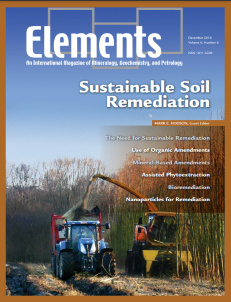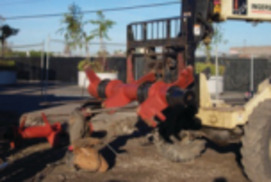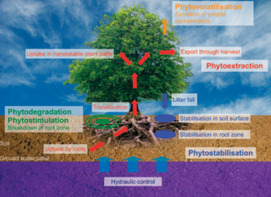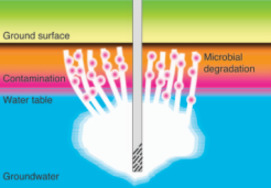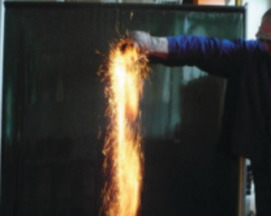
Sustainable Remediation of Soil
Mark E. Hodson – Guest Editors
Table of Contents
Humanity requires healthy soil in order to flourish. Soil is central to food production, regulation of greenhouse gases, and pro- vision of amenity. But soil is fragile and easily damaged by uninformed management or accidents. One source of damage is contamination with the chemicals that are used to provide the lifestyles to which the developed world has become accus- tomed. Repairing or cleaning up this damage so that soil can again be used for beneficial purposes is a vitally important task. Traditionally, soil “clean up” involved removing the contaminated soil and replacing it with clean soil from else- where. Clearly this is not sustainable. Increasingly researchers and practitioners look to clean up contaminated soil and make it good for reuse, rather than simply discarding it. Mineralogy and geo- chemistry are central to the design and implementation of many of these new approaches.
- The Need for Sustainable Soil Remediation
- Organic Amendments for Remediation: Putting Waste to Good Use
- Mineral-Based Amendments for Remediation
- Assisted Phytoextraction: Helping Plants to Help Us
- Bioremediation: Working with Bacteria
- Nanoparticles for Remediation: Solving Big Problems with Little Particles
Anchor QEA
Australian Scientific Instruments (ASI)
Bruker AXS
Dakota Matrix
Excalibur Mineral Corporation
Geohydro 2011
ICAM 2011
Initiatives in Art and Culture
PERALK-CARB workshop
Rigaku
Rocks & Minerals
RockWare
Savillex
v7n1 COSMOCHEMISTRY
Guest editor: Dante S. Lauretta (University of Arizona)
Cosmochemistry is the study of extraterres trial materials aimed at understanding the nature of Solar System bodies, including the planets, their natural satellites, and small bodies. An important goal is to increase our understanding of the chemical origin of the Solar System and the processes by which its planets and small bodies have evolved to their present states. Research in cosmochemistry covers a wide range of disciplines and tech niques, including mineralogy, petrology, major and trace element chemistry, isotope compositions, radiometric ages, magnetism, and radiation exposure effects. These studies provide a wealth of data about the processes of stellar evolution, planetary system formation, alteration in asteroidal and cometary interiors, and the accretion history of the Earth, including the origin of Earth’s volatile and organic material.
- A Cosmochemical View of the Solar System Dante S. Lauretta (University of Arizona)
- Presolar History Recorded in Extraterrestrial Materials Ann N. Nguyen (Johnson Space Center) and Scott Messenger (ESCG/Jacobs Technology)
- Stable Isotope Cosmochemistry and the Evolution of Planetary Systems Douglas Rumble III (Geophysical Laboratory), Edward D. Young (UCLA), Anat Shahar (Geophysical Laboratory), and Weifu Guo (Geophysical Laboratory)
- The Asteroid–Comet Continuum: In Search of Lost Primitivity Matthieu Gounelle (Museum National d’Histoire Naturelle, Paris)
- Organic Chemistry of Carbonaceous Meteorites Zita Martins (Imperial College London)
- Chronometry of Meteorites and the Formation of the Earth and Moon Thorsten Kleine (Westfalische Wilhelms Universität Münster) and John F. Rudge (University of Cambridge)
- Meteorites: An Overview Edward R. D. Scott
- Mineral Evolution (February 2010)
- Sulfur (April 2010)
- Fluids in Metamorphism (June 2010)
- Atmospheric Particles (August 2010)
- Thermodynamics of Earth Systems (October 2010)
- Sustainable Remediation of Soil (December 2010)
Download 2010 Thematic Preview
- Cosmochemistry (February 2011)
- Iron in Earth Surface Systems (April 2011)
- Global Water Sustainability (June 2011)
- When the Continental Crust Melts (August 2011)
- Tourmaline (October 2011)
- Mine Wastes (December 2011)
Download 2011 Thematic Preview


